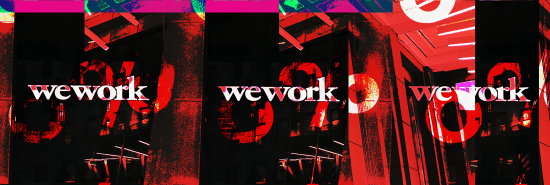
The cautionary tragedy of WeWork and the zero interest rate delusion
Tiana Lowe Doescher
Video Embed
WeWork has filed for bankruptcy, capping the flexible office space venture’s long slide and then collapsing after once being the nation’s most valuable startup.
On Nov. 6, the company filed for chapter 11 protection in the U.S. Bankruptcy Court in New Jersey. But less than five years ago, at the start of 2019, WeWork was Wall Street’s most anticipated IPO, with a shocking $47 billion valuation from investment giant SoftBank.
NOVEMBER TO REMEMBER: RHODE ISLAND SPECIAL ELECTION EXPECTED TO HELP HOUSE DEMOCRATS
Now, the company has a market capitalization of fewer than a quarter billion dollars. It’s a saga that has played out publicly, thanks primarily to the Apple TV+ fictionalization WeCrashed. Its collapse is less about the singular hubris of the firm’s charismatic but now infamous founder, Adam Neumann. And more of a cautionary tale about the perverse incentives of the failed zero-interest rate policy that characterized the global economy from 2009 to 2021.
While the rest of the story surrounding this saga is complicated, the central concept of WeWork as a business is not. Locking in low rental rates with long-term leases, WeWork rents out short-term commercial leases but with a minor twist. Guided by Neumann’s minimalist, millennial aesthetic, WeWork’s office spaces are trendy “co-working” spaces.
Unlike the fluorescent-lit cubicles that characterized offices of the past, WeWorks across the planet offered well-lit, open-concept workspaces with couches, glassy conference rooms to reserve, and amenities ranging from game rooms and maternal suites to Kombucha and cold brew on tap.
In theory, one could see the pathway to modest profitability. One part of the profit was generated by the margin between the low rate WeWork paid for its properties and what it charged its users. While the other part of the profit was generated by the premium paid for WeWork’s admittedly luxurious amenities.
Instead, WeWork recorded a net loss of $2 billion last year and a $400 million net loss in just the second quarter of this year. Recall that this is after WeWork finally did manage to go public in 2022. Instead of debuting at a $47 billion valuation, as SoftBank once hoped, WeWork’s IPO was valued at $9 billion, meaning the company has lost 97.8% of its market cap in the past two years alone; with the profitability posted above, there’s no wonder why.
That’s where the zero interest rate policy comes in. Why did the company rise so high in the twilight of the ZIRP years? And why is it bleeding so much revenue, even when the theoretical business model isn’t so terrible? It all goes back to the dangerous incentive structure of the interest rate environment of the past decade.
Just like Casper (a direct-to-consumer mattress firm), Root (a direct-to-consumer auto insurance firm), and GoHealth (a direct-to-consumer health insurance broker), WeWork wanted to capture the zeitgeist and bill itself not as a commercial real estate broker, but a tech company. Not coincidentally, Casper, Root, and GoHealth, like WeWork, all had their own disastrous IPOs after investors realized their projected earnings did not reflect mattresses and insurance policies made slightly more profitable thanks to more limited overhead, but pure wish-casting.
Their slide decks and mission statements may have adopted the same sexy sheen of Spotify and Snapchat, but the vendor for a temporary office space — even if you search for it online — is not a tech company. It is still just a glorified short-term commercial real estate company.
But ZIRP presented an aberration. On the one side of the equation, the artificially low return offered by bonds and loans meant that investors desperately searched anywhere else for positive growth. WeWork was able to capitalize on this hunger twice over, not just thanks to investor desperation but also by taking advantage of artificially low mortgage rates, which meant their properties could turn a profit.
This meant that for years, WeWork could burn through investor cash with zero borrowing costs while portraying itself as a lifestyle brand, or a tech brand. Basically, anything but a boring old real estate company.
But it wasn’t, and just as what must go up must come down, when rates stay low during prolonged periods of economic and deficit growth, they must eventually come up, and quickly. With borrowing costs at their highest point in nearly 20 years and commercial real estate at its least desirable in decades, the matter of WeWork’s bankruptcy was not if it would ever come, but when.
